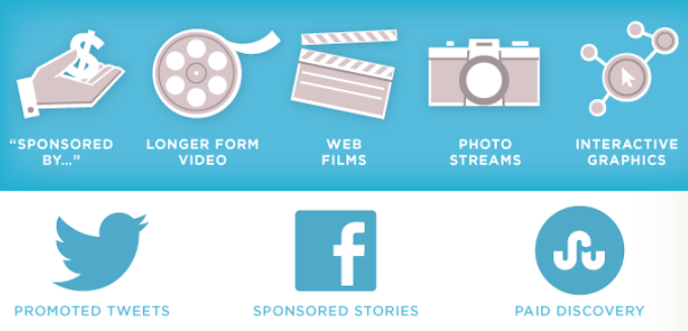
Advertising on the Internet takes on so many different forms these days. You’ve got the regular banner ads that have been around since the very early days. You’ve got sponsored content on nearly all the social networks. You’ve got pre-roll ads in YouTube videos, you’ve got email marketing, and you’ve got sponsored links on your search engine results page too.
And while reports of the death of the traditional banner ad have been greatly exaggerated, its relevance in this modern age of the Internet may be waning. Click-thru rates on these banners may not quite be what they used to be, though the brand awareness and exposure they provide can still give advertisers good value. That being said, if advertisers want to see better engagement and more conversions, it’s looking more and more like native advertising will take an increasingly large role in the world of Internet marketing.
What Is Native Advertising?
Native advertising can be loosely defined as online advertising that has been designed in such a way to blend in with the regular content of the platform on which it appears. Sponsored tweets and Facebook updates are examples of this. Advertorials and paid reviews on blogs are other examples.

It’s not that the concept of native advertising is particularly new. You’ve surely seen the advertorials featured in a variety of print magazines and newspapers. The only difference is that it’s online and it can take on a number of different forms on the Internet too.
Keeping It Real
Some people say that this marks the death of journalistic integrity, especially when it comes to bloggers who are more easily swayed by “swag” and earning a couple bucks. Other people say that native advertising ruins the experience of social media. I say that native advertising, at the end of the day, is probably better for everyone involved. Let me explain.
When you arrive on most websites on the Internet, what do you see? You have the core content that you actually want, but it’s usually surrounded by banner ads and blocked by pop-up lightboxes. They’re necessary but possibly distracting. Now what if those just disappeared and you were left with just the content.

Now what if some of that content happened to be sponsored, but the sponsored content was still in line with the scope of the site and it still provided value to the reader (or listener, watcher, etc.)? Now, you’re left with a site that only has what you want and nothing that you don’t.
Everyone Has Something to Gain
From the perspective of the website visitor, there’s just more stuff to see and read. From the perspective of the website owner, there’s a great revenue stream in place to keep the site going and put some good money in his or her pocket. From the perspective of the advertiser, visitors are more engaged with the content and the brand, building greater trust and encouraging better conversion and interaction.
Of course, not all native advertising is made alike and some can be really annoying. But when it’s implemented in an intelligent and strategic way, everyone wins.
